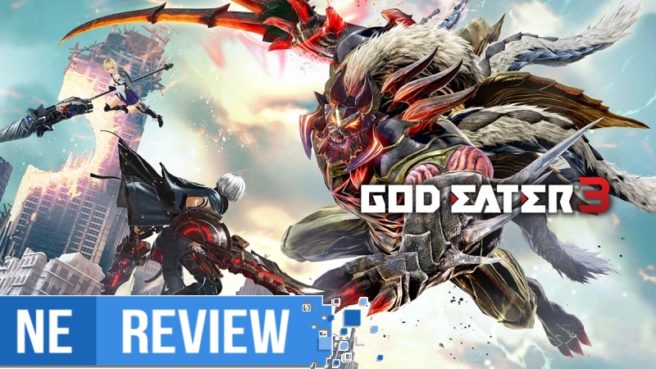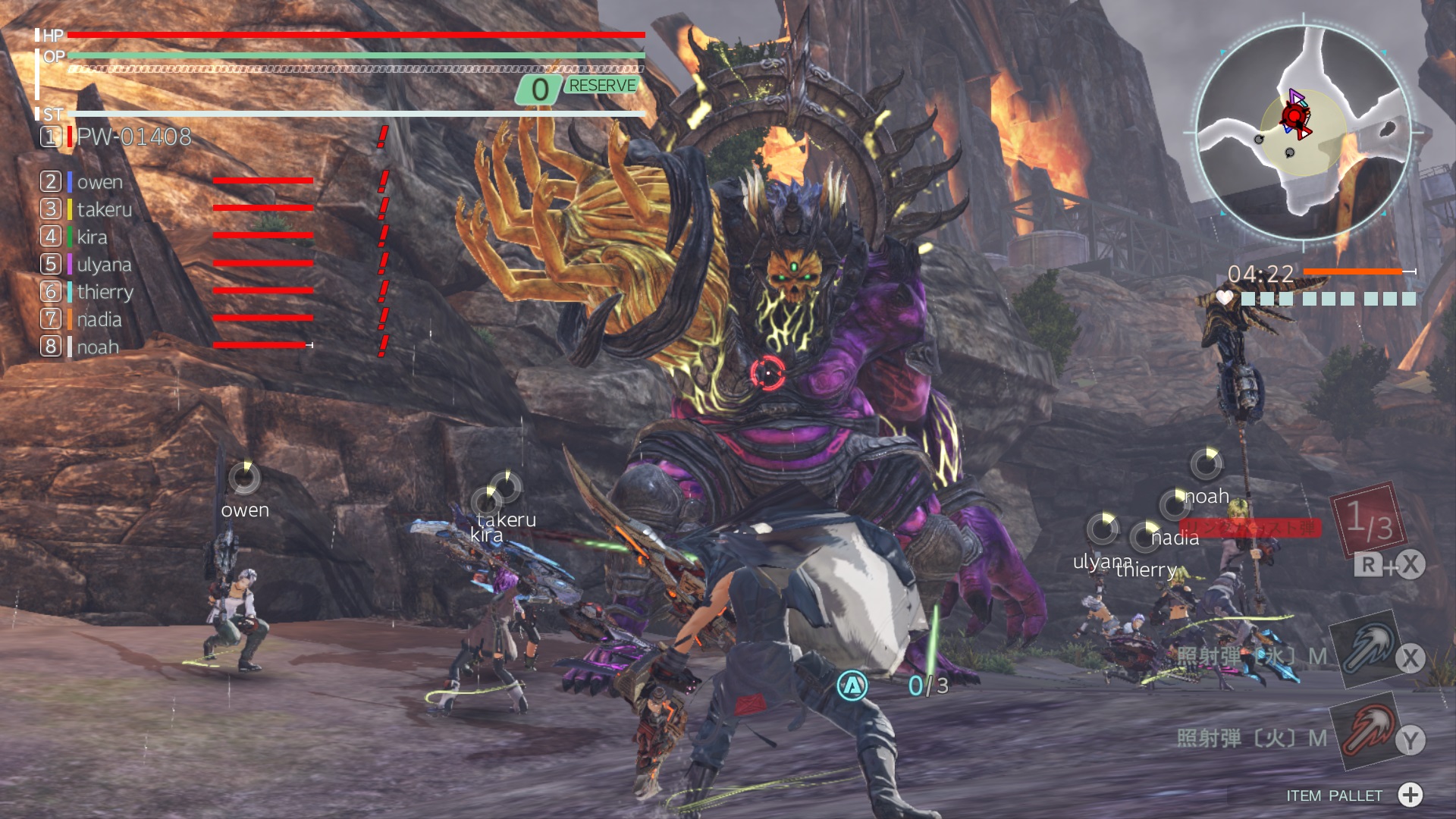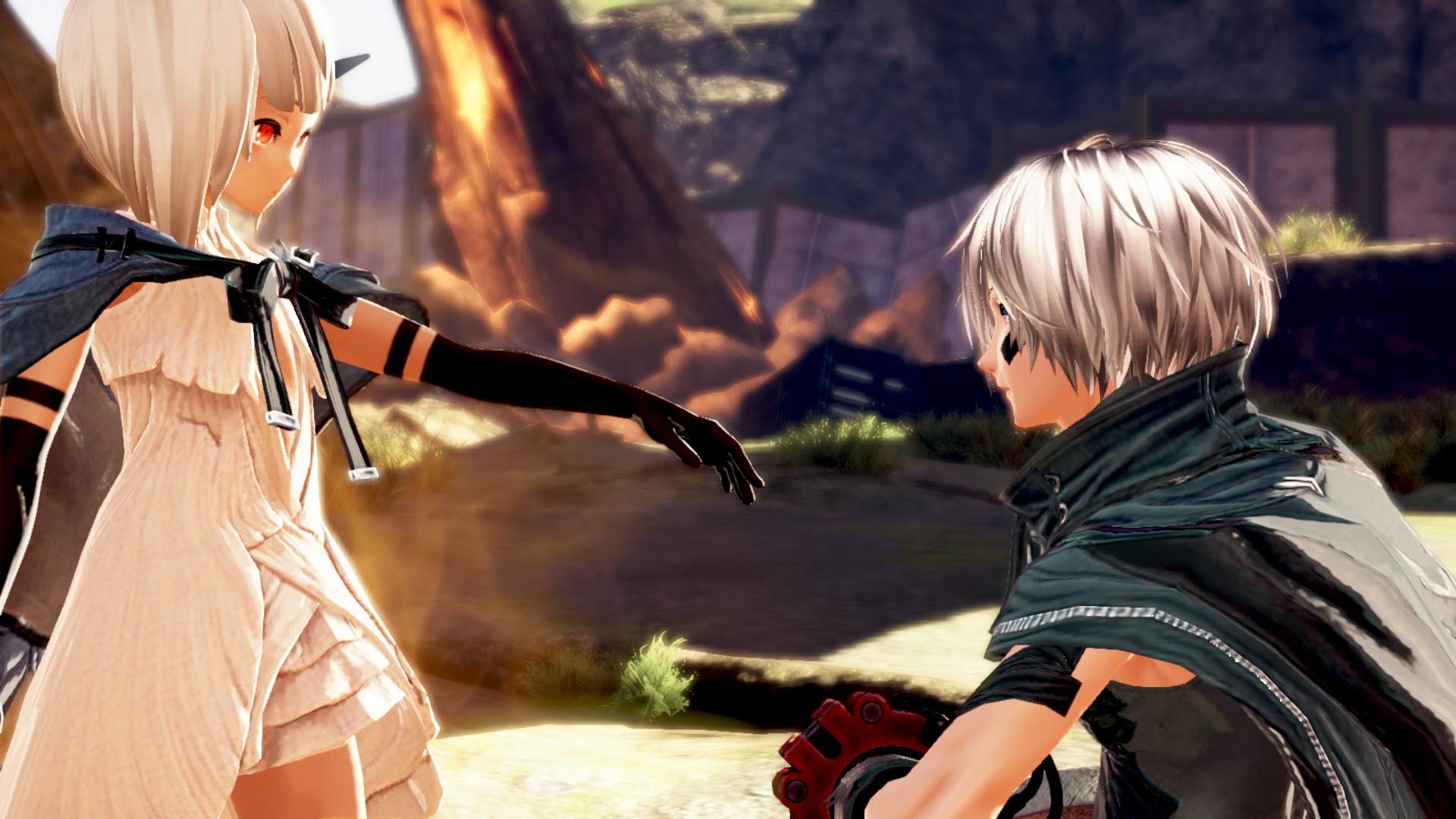[Review] God Eater 3
God Eater 3’s combat is fast, and as someone who loves hack-and-slash titles, it feels great. Not having to wait five to ten seconds to swing an astronomically heavy sword games like these tend to have that may or may not miss is great, and even with the bigger weapons God Eater gets straight to the point of making sure blade meets flesh. With high speed traversal and dodge mechanics thanks to the new Dive system which allows players to dash across the screen at high speeds, everything you do out on the field feels great to execute, allowing for multiple Aragami to be slain in a matter of seconds.
You can further stack buffs and other attributes across your characters with the Engage system and through Acceleration Trigger. The Engage system can be performed whenever close by another AGE, and as the meter between you and a partner rises through combat within close proximity of each other, you can then unleash a special move that stays on for a period of time. Sometimes this can range from attack buffs to decreased damage taken for a set amount of time. Utilizing various Engage abilities between your team is an added key to victory that gives a more technical and deeper mechanic to fighting Aragami throughout your playthrough. In addition to this, Acceleration Trigger grants massive buffs that can be stacked through accomplishing certain tasks out on the field. The best part about these is they can be performed as many times as you like with no restriction or consequence, and while fighting more powerful Aragami where strategy is key, using this to your advantage is of the utmost importance. It seems like a lot to take it in, especially with so much to do and execute out on the field, but it really becomes second nature after the first few hours with the game.
Performance is solid, so even when a lot tends to happen between each character’s unique abilities, it remains stable. Resolution takes a rather significant hit while out on missions sadly, and occasional pop-in can be noticeable on the long stretches that don’t have much going on in the way of textures or assets, making the overall quality of the game diminish, though close ups and cutscenes are mostly smoothed, leaving a rather aggressive dynamic resolution while playing. Despite this, it remains consistent in its performance, so for me – especially having played them all on a handheld – it’s an improvement no matter what, but as a console experience for those looking for a strictly at-home, connected to the TV environment, it may leave a lot to be desired. However, it should be noted that this is a massive improvement when it comes to Bandai Namco’s ports coming from their first foray on the Switch with Xenoverse 2 which should be commended.
Those looking to play heavily online with friends in the region or randoms across the globe unfortunately have a slight mess here, as the online portion of the game feels rather lackluster. The way lobbies and teams are set up is a bit of a nuisance, and it made me sad to see it in such a state. It’s possible that there are plenty of people who own a Switch that may have already picked the game up on PC or PS4, so they felt no need to double-dip on a port a year later that included no real benefit, and if anything is seen as a downgrade given half the framerate and drop in resolution at the cost of portability, but it’s also a little concerning given that I’m sure there are also plenty of Switch users that either never heard of God Eater and are now being exposed to it, or held out for the Switch version as their platform of choice. Unless I was doing something wrong despite the seemingly simple setup, online mode simply did not work very well. It’s set up in an intuitive way where you can go material hunting, progress the story together, or level, but after trying for the better part of two hours, most teams/rooms had passwords, and the ones that didn’t were immediately disbanded. It got me absolutely nowhere. I’m hoping the online mode eventually flourishes, as it is undoubtedly fun to be able to go take on Aragami in a more strategic format versus AI doing what they’re designed to do (the bare minimum).
When it comes to RPGs on the Switch, God Eater 3 is a welcome addition that invites you and a team of players locally and around the world to take on Aragami with a personal character you can make yours and watch evolve over time to a truly powerful AGE that’s a force to be reckoned with. While it’s had a long history, it’s a perfect entry point for newcomers to the series that want to get into these types of games but maybe are intimidated by the grind and potential investment needed, but God Eater 3, much like the AGEs you fight with, adapts to your schedule and style and makes it, to me, the most accessible God Eater yet. While there are some things I would like to still see improved like a cleaner UI and a more lively overworld and hub, God Eater 3 points the series in the right direction with plenty of quality-of-life enhancements and a more intuitive control layout that feels modern and logical.
The Verdict
God Eater 3 builds upon the successes of its predecessors and provides a much more refined experience through streamlining upgrades, mission accessibility, and an overall quality of life boost that make it an easy pickup for just about anyone. While online is unfortunately barren on Switch, the game itself is meaty enough with a solid story to keep local players more than happy, and with the added ability for local co-op on top of that, it makes for a flashy fun time where you and your friends can go on raids together, tackling monsters of all sizes and skill. The Aragami are plentiful and come in a good variety that keep the hunts from getting stale, though longtime God Eater fans will see tons of familiar faces that may or may not bring up good or bad memories from your initial encounter throughout the series’ history. Those that may have always been intimidated by the nature of Monster Hunter with its heavy grinding and “sell your soul” investment will be happy to know that God Eater has always been a “lite” version of sorts that accommodates for all playstyles and schedules, while having a unique direction that I find preferable to other games of this nature. Customization is incredibly deep, and players can make the game feel truly like their own, with tons to explore for your character, weapons, loadouts, teams, and much more. God Eater 3 unfortunately suffers from rather low resolution, and out on the field things are hard to make up at times in the distance, but performance is solid and having something like this at home or on the go is all I can ask for, especially as someone who’s played the rest of the series on inferior portable hardware.
God Eater 3 review copy provided by Bandai Namco for the purposes of this review.



